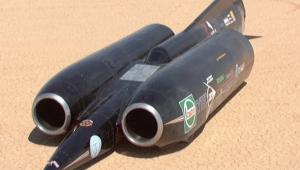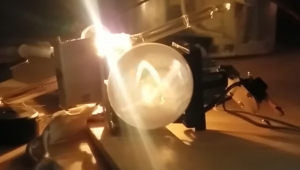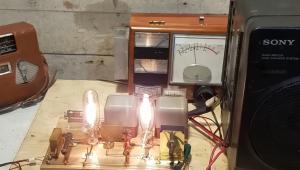Microspeakers: The Last and Greatest Frontier

Microphones can capture signals with a flat response and tremendous dynamic range. Similarly, given enough bits, analog-to-digital converters can encode, and digital-to-analog converters can decode, an audio signal with a response and range that far surpasses that of the human ear.
Once the Achilles’ heel of audio, storage is now trivial: 8 terabytes of storage costs $300 at Best Buy. Amplifiers can boost volume levels while adding only the tiniest amounts of distortion at even the mightiest levels. Good loudspeakers, albeit with a bit of coloration, can reproduce signals with great aplomb.
These days, audio is good, really good. In the interests of keeping themselves employed, golden ears can kvetch convincingly about the fidelity of high-end systems. But truth be told, the recording and production decisions in specific recordings provide a lot more room for grumbling than does the equipment that reproduces them.
But there remains a last frontier, an audio problem that seems insurmountably difficult. The last problem concerns loudspeakers. No, not the cherry-covered towers in your home theater. The tiny speakers in your phone.
They are called microspeakers, and with good reason. A typical specimen might occupy the same area as a dime. The idea that such a small transducer could make any identifiable sound at all, let alone provide high fidelity, seems outrageous. Yet some of the smartest audio engineers on the planet are tackling that very problem. They want to develop microspeakers that not only sound good, but sound great.
Loudspeakers have a tough job. A successful speaker must move the air in your room in the same way, for example, as a hundred musicians in a symphony orchestra move the air in a concert hall. Now imagine doing that with a phone’s built-in microspeaker. Ambitious, to say the least.
The speaker is among the most antediluvian components in the phone. Its basic design predates even the plastic used to make the phone’s case. Game changers like low-bitrate coding and lossless data compression upended the way we viewed the storage and transmission of audio signals. High-fidelity microspeakers will need the same magnitude of game changing.
The engineers working on microspeaker sound are just beginning to wrap their minds around the problem. Unlike today’s crude parts, a high-fidelity microspeaker will require new kinds of expertise in speaker miniaturization and manufacture. Even so, the tiny diaphragm will still be working against the laws of physics.
The only way to overcome that will be through the leverage of magnificently complex digital signal processing. Countless lines of code and blazing-fast computation will analyze the music waveform and precondition it to counterbalance the severe nonlinearities and limitations of the transducer. At the output, when the data causes the microspeaker to disturb the air around the phone, it will sound awesome.
A smartphone is truly a modern marvel. A few years ago, few would have believed that such an amazing device could exist. Compared with all the high-tech capabilities of a phone, the phone’s sound quality is probably its weakest link. And yet I look forward to the day when I lay my phone on the table and hit the play button and the high-fidelity sound of a symphony orchestra fills my room. Can that possibly ever happen? Well, they’re working on it.
- Log in or register to post comments






























































